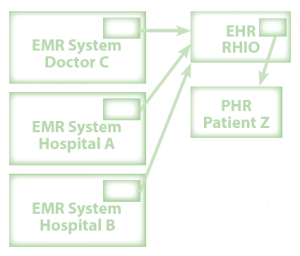An article in the New York Times points up some of the shortcomings of the push for meaningful use of electronic medical records (EMR): it’s vulnerable to fraud. The Department of Health and Human Services is shocked, just shocked, that perhaps some physicians and hospitals may have not been entirely accurate in self-reporting how well they’ve converted to an EMR, just to get a few million dollars.
But the part of the article that got my attention was this quote from Lynne Thomas Gordon, the chief executive of the American Health Information Management Association, a trade group in Chicago:
We’ve gone from the horse and buggy to the Model T, and we don’t know the rules of the road. Now we’ve had a big car pileup.
The reason I love this aphorism is not because I am shocked at the poor HHS oversight of the meaningful use process. To that, I say “duh.”
But it encapsulates where I think we are in terms of usability of medical software. Even our best software and hardware – iPhones and Android phones, Google search, Google Maps, and the like – are still barely beyond the Model T phase. Our medical software, far behind these market leaders, doesn’t even make it to the Model T level. Maybe its to the “pileup of Model Ts” phase.
We don’t need Model Ts, we need something like the Tesla Roadster.
 In the January 2013 HealthAffairs, Arthur L. Kellermann and Spencer S. Jones of the RAND Corporation look back at the projections of a 2005 RAND study of healthcare IT. Why, in defiance of that study’s projections, are our medical computer systems not saving us $81 billion a year? They list reasons: slow adoption, lack of interoperability, and – you guessed it – poor usability. So, just maybe, if you get vendor CEOs and hospital CIOs to spend a few hours browsing the essays on this website, you can save the country billions of dollars. (Not to mention saving hospitals’ money and making more money for vendors.) Who’d have figured?
In the January 2013 HealthAffairs, Arthur L. Kellermann and Spencer S. Jones of the RAND Corporation look back at the projections of a 2005 RAND study of healthcare IT. Why, in defiance of that study’s projections, are our medical computer systems not saving us $81 billion a year? They list reasons: slow adoption, lack of interoperability, and – you guessed it – poor usability. So, just maybe, if you get vendor CEOs and hospital CIOs to spend a few hours browsing the essays on this website, you can save the country billions of dollars. (Not to mention saving hospitals’ money and making more money for vendors.) Who’d have figured?





